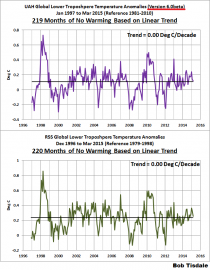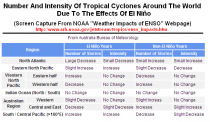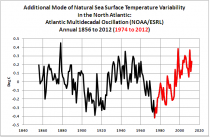EurActiv, 8 May 2013
EU leaders will grapple with controversial issues including shale gas development and climate change mitigation at an energy summit on 22 May, documents obtained by EurActiv show. Competitiveness, in the EU energy policy context, translates into a re-thinking of the Union’s climate policies.
As agreed at the 14 to 15 March summit, EU leaders will meet to discuss how to lower energy prices and so improve the Union’s industrial competitiveness.
According to the draft guidelines for the summit conclusions, prepared by the services of Council President Herman Van Rompuy, the EU heads of state intend to focus on “key aspects” of energy policy aimed at boosting growth, productivity and employment to help overcome the effects of the economic crisis.
“High energy prices and costs hamper European competitiveness,” the document says. It invites discussion on how Europe could stay competitive globally and bring down energy prices at a time when Europe is facing massive investment shortfalls in energy infrastructure and generation capacity.
Van Rompuy’s services also call on the EU leaders to discuss ways of further increasing energy efficiency, developing “indigenous resources” and facilitating investment. The Commission will be tasked with developing a “predictable climate and energy policy framework post 2020”.
Re-thinking climate policies
An analysis of energy-price costs in member states will be requested from the EU executive by the end of 2014, highlighting the EU’s competitiveness with its global counterparts.
Competitiveness, in the EU energy policy context, translates into a re-thinking of the Union’s climate policies.
Recently, the powerful employers’ group BusinessEurope called on European Commission President Jose Manuel Barroso to radically shift the EU’s energy policy away from climate change mitigation towards cost-competitiveness and security of supply. [more]
The Draft Conclusions say that the EU’s goal is to ensure ‘a level playing field for business and industry”, so they can compete in the global marketplace, having regard inter alia to the impact of carbon leakage”.
“Carbon leakage” is jargon for the relocation of European businesses abroad because of the comparative advantage they may gain from looser climate regimes.
Shale gas
Leaders are also expected to task the Commission to assess a “more systematic recourse to indigenous sources of energy, both conventional and unconventional”.
Unconventional sources usually refers to shale gas, which many believe has triggered an industrial revival in the USA, but is viewed with suspicion by several EU countries.
Regarding conventional resources, several EU countries are exploring offshore fields for gas and oil, their industrial partners being companies from the USA or Israel. The Commission has rarely played a part in these ventures.
Full story
----------
Secret IPCC Shenanigans: Met Office Battles To Suppress Details
The Register, 8 May 2013
Andrew Orlowski
David Holland Takes On The IPCC’s Lack Of Transparency
Can the Internet help climate scientists? Not everyone thinks so.
“The Internet is a double-edged sword,” Met Office scientist Peter Stott told a London courtroom last week. “There’s a whole cacophony of voices on blogs, people with different opinions and people very motivated to dig around. But not in the ‘big picture’ details, frankly. That is not helpful to getting an overall balanced assessment.”
Stott had just been asked whether widespread online participation in the UN’s Intergovernmental Panel on Climate Change assessment-of-the-science process might improve it. The open source software development principle, that “given enough eyeballs, all bugs are shallow”, came to mind.
The occasion was an Information Tribunal appeal brought by one-man information Inquisition David Holland. The retired Mancunian engineer’s previous enquiries were seen by many as the catalyst for the famous “Climategate” email leaks.
“My interest in this was never to do with climate. I’m trained as an engineer, and I know the scientific method,” Holland told El Reg in 2011, when he had sought access to large amounts of information from the British climate-science establishment and was denied. Holland’s FOI requests set off a catastrophic sequence of prevarication and obstruction by the responding scientists, which ultimately appears to have triggered the Climategate leaks and massive discomfort for all the researchers involved.
Now it’s the turn of Peter Stott of the Met Office to come under Holland’s microscope.
I actually felt a bit of human sympathy for Stott; you can bet he would have rather been somewhere else, and it transpires that Holland didn’t actually want him there at all. Holland had wanted to cross-examine the head of the UK delegation to the IPCC, a Department of Environment and Climate Change official called David Warrilow, head of climate science and international evidence.
The procedural questions under the spotlight are Warrilow’s bailiwick, not Stott’s, but Holland was refused his man. Stott, we learned, had been pressganged into appearing by the Met Office’s lawyers. Stott also had to defend his and allied organisations’ refusal to disclose material on a basis as we shall see that’s highly questionable. No intelligent person should have to waste his own time, or anyone else’s time, defending the indefensible.
And the mere presence of a Met scientist is a bit of a red herring, as it’s really the IPCC that is on trial; the case for the defence is being organised by the Treasury solicitor, paid for by you.
Judge Anisa Dhanji was not impressed by the defence’s refusal to find someone so very germane to the case to stand up to cross-examination, and demanded that a written statement by Warrilow be included in the record.
So. Here we all were. Why was this happening, exactly? Read more.
A new paper published in Environmental Research Letters finds that lack of access to modern fossil fuels is responsible for millions of premature deaths amongst the poorest of the planet, and that “improved access to modern cooking fuels alone can avert between 0.6 and 1.8 million premature deaths annually in 2030 and enhance well being substantially.” The environmental left wants to raise the price and restrict supply of fossil fuels via taxation and drilling limitations, further restricting modern energy access to the poor, increasing social injustice and the premature deaths that result.
Pathways to achieve universal household access to modern energy by 2030
OPEN ACCESS
Full text PDF (1.72 MB)
A lack of access to modern energy impacts health and welfare and impedes development for billions of people. Growing concern about these impacts has mobilized the international community to set new targets for universal modern energy access. However, analyses exploring pathways to achieve these targets and quantifying the potential costs and benefits are limited. Here, we use two modelling frameworks to analyse investments and consequences of achieving total rural electrification and universal access to clean-combusting cooking fuels and stoves by 2030. Our analysis indicates that these targets can be achieved with additional investment of US $65 to 86 billion per year until 2030 combined with dedicated policies. Only a combination of policies that lowers costs for modern cooking fuels and stoves, along with more rapid electrification, can enable the realization of these goals. Our results demonstrate the critical importance of accounting for varying demands and affordability across heterogeneous household groups in both analysis and policy setting. While the investments required are significant, improved access to modern cooking fuels alone can avert between 0.6 and 1.8 million premature deaths annually in 2030 and enhance well being substantially.
Read about the collapse of the green movement in Europe here.
ANOTHER SKEPTICALSCIENCE FAIL
Alternate Title: Climate Science Community Continues to Lose Sight of Reality
SkepticalScience is promoting the Holland and Bruyere (2013) paper Recent Intense Hurricane Response to Global Climate Change as proof positive that hypothetical human induced global warming has caused more intense hurricanes. See Dana Nuccitelli’s post New Research Shows Humans Causing More Intense Hurricanes. My Figure 1 is Figure 1 from Holland and Bruyere (2013).

The abstract of Holland and Bruyere (2013) begins:
An Anthropogenic Climate Change Index (ACCI) is developed and used to investigate the potential global warming contribution to current tropical cyclone activity. The ACCI is defined as the difference between the means of ensembles of climate simulations with and without anthropogenic gases and aerosols. This index indicates that the bulk of the current anthropogenic warming has occurred in the past four decades, which enables improved confidence in assessing hurricane changes as it removes many of the data issues from previous eras.
Thats right; referring to Figure 1, Holland and Bruyere (2013) created an index by subtracting the multi-model mean of climate models forced by natural factors (variations in solar activity and volcanic aerosols) from the mean of the simulations that are also forced with anthropogenic factors like manmade greenhouse gases as if the two types of model simulations and their difference represent reality. They then used that model-based index, with little to no basis in the real world, for comparisons to hurricane activity at various hurricane strengths.
Hurricane activity is influenced by tropical sea surface temperatures. Yet, we know climate models cannot simulate sea surface temperatures over the past 31 years, which is included in the 1975 to 2010 period studied by Holland and Bruyere (2013). Refer to the post here for a model-data comparison of satellite-era sea surface temperature anomalies. And we’ve also discussed for 4 years how ocean heat content data and satellite-era sea surface temperature data indicate the oceans warmed naturally. Refer to the illustrated essay ”The Manmade Global Warming Challenge” [42MB]. The models are obviously flawed.
Hurricane activity is also influenced by the El Nino-Southern Oscillation (ENSO). There are fewer Atlantic hurricanes during El Nino years due to the increase in wind shear there. On the other hand, there’s an increase in the intensity of eastern tropical Pacific cyclones during El Nino years. See Table 1, which is from the NOAA Weather Impacts of ENSO webpage.

Does Holland and Bruyere (2013) consider ENSO? No. The words El Nino and La Nina do not appear in the paper, and ENSO appears only once, when they’re discussing the reason for the use of 5-year smoothing.
All variance numbers use the 5-years smoothed annual time series to remove ENSO type variability.
Can climate models simulate ENSO? The answer is also no. Refer to the post Guilyardi et al (2009) Understanding El Nino in Ocean-Atmosphere General Circulation Models: progress and challenges”.
Guilyardi et al (2009) includes:
Because ENSO is the dominant mode of climate variability at interannual time scales, the lack of consistency in the model predictions of the response of ENSO to global warming currently limits our confidence in using these predictions to address adaptive societal concerns, such as regional impacts or extremes (Joseph and Nigam 2006; Power et al. 2006).
The multidecadal variability of the sea surface temperatures in the North Atlantic is called the Atlantic Multidecadal Oscillation or AMO. There are numerous papers that discuss the influence of the Atlantic Multidecadal Oscillation on hurricane activity. In fact, the NOAA Frequently Asked Questions About the Atlantic Multidecadal Oscillation (AMO) includes the question Does the AMO influence the intensity or the frequency of hurricanes (which)? Their answer reads:
The frequency of weak-category storms – tropical storms and weak hurricanes – is not much affected by the AMO. However, the number of weak storms that mature into major hurricanes is noticeably increased. Thus, the intensity is affected, but, clearly, the frequency of major hurricanes is also affected. In that sense, it is difficult to discriminate between frequency and intensity and the distinction becomes somewhat meaningless.
The AMO began its multidecadal rise in temperature in the mid-1970s. See Figure 2. By focusing their analysis on the period of 1975 to 2010, Holland and Bruyere (2013) appear to be, in part, attempting to blame manmade greenhouse gases for an increase in activity that’s already been attributed to the natural variability of the AMO.

Off topic note: Referring to Figure 1 from Holland and Bruyere (2013), notice how the surface temperature data ends in 1999 in cell b, while the models continue for a number of years beyond then, probably to the 2005 end year of the historic CMIP5 simulations. Apparently, some climate scientists haven’t figured out what assumption a reader is forced to make when he or she sees disparities in the end dates of model-data comparisons that the models would show very poorly if Holland and Bruyere (2013) had extended the data to the end year of the historic simulations, 2005, or to the end year of their study, which was 2010. Note also that the data begins after the start year of the models, too. In other words, most readers wonder what the authors are hiding and assume the worst.
CLOSING
Holland and Bruyere (2013) appears to be a flawed attempt to counter the findings of the recent (2012) IPCC Special Report on Managing the Risks of Extreme Events and Disasters to Advance Climate Change Adaptation (SREX). See the Summary for Policymakers here. The IPCC writes:
There is low confidence in any observed long-term (i.e., 40 years or more) increases in tropical cyclone activity (i.e., intensity, frequency, duration), after accounting for past changes in observing capabilities.
Holland and Bruyere (2013) is yet another peer-reviewed study that relies on climate models as if the models represent reality, when climate models clearly do not. Eventually, the climate science community will have to come to terms with this possibly not in my lifetime at the rate they’re going. And the portrayers of gloom and doom at SkepticalScience like Dana Nuccitelli somehow find papers like Holland and Bruyere (2013) to be credible. Nothing surprising about that.


